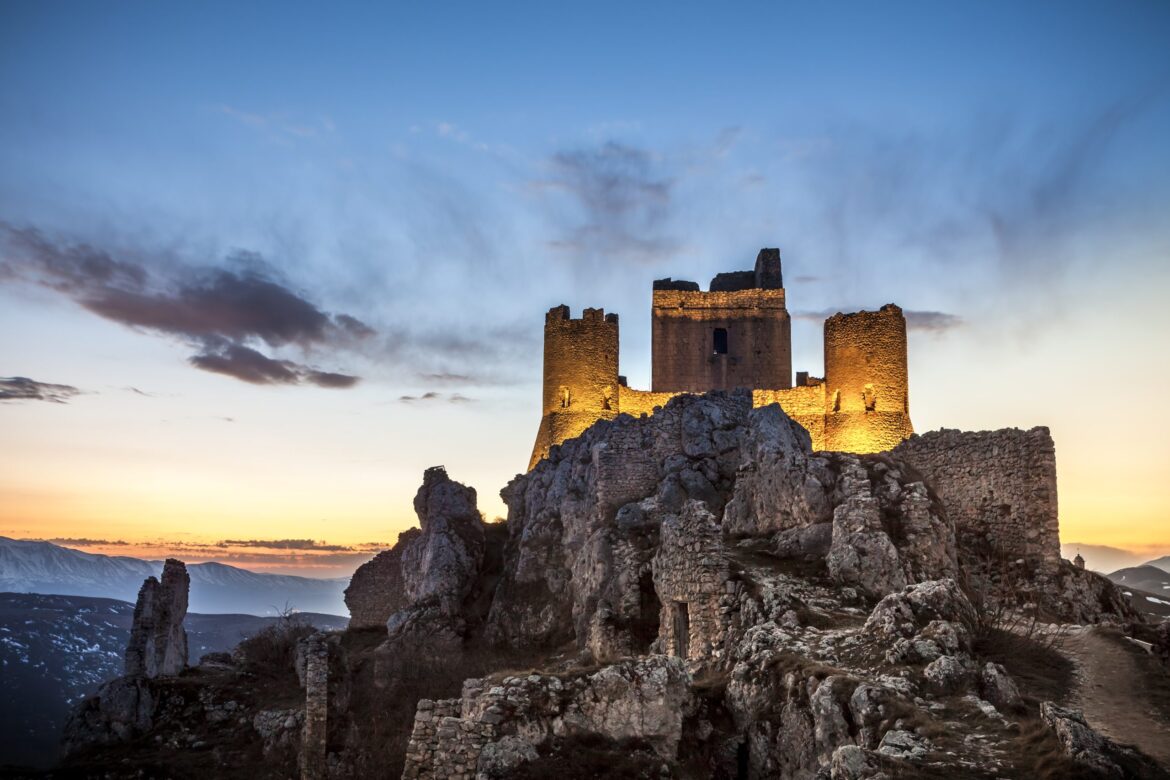Italian wine expert Filippo Bartolotta is on a mission to educate industry professionals on the wonders of one Italian region. db reports from the 2024 Abruzzo Academy.
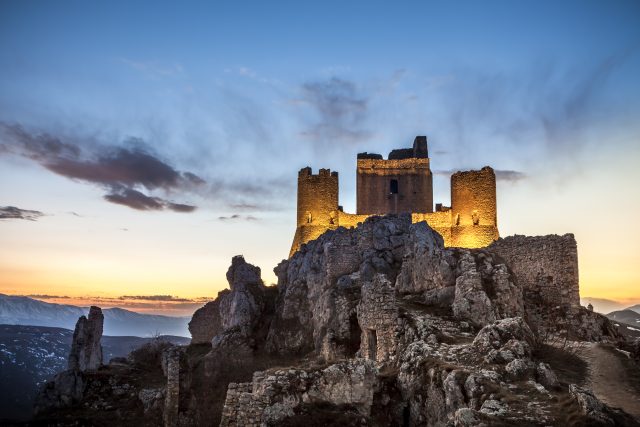
WITH NORTH of 500 native grape varieties – more than any other country in the world – it’s no surprise that Italy boasts a varied selection of wine regions, all with a unique wine history and viticultural traditions.
Located in the calf of the ‘boot’ of Italy, Abruzzo is one such region, with an originality that is deserving of a closer look. For the past two years, the region has been granted this spotlight, thanks to the Consorzio Tutela Vini d’Abruzzo and Italian wine expert and journalist Filippo Bartolotta, who launched the Abruzzo Academy in 2023.
The Abruzzo Academy’s second cohort, consisting of 30 wine professionals from all over the world, graduated in December 2024. The three-day academy features classes led by Bartolotta himself bolstered by winery visits around the region, culminating in an exam.
The Consorzio’s aim is not to put students under pressure, but to highlight the pleasure that comes with learning about the region, which stretches from the Apennine foothills to the Adriatic Sea. “Don’t get obsessed with the exam,” Bartolotta told attendees in December, including a member of the db team.
Classes centred on Cerasuolo d’Abruzzo and Montepulciano d’Abruzzo on day one; and Pecorino on day two, showcasing wines of varying altitudes from sea level to a height of 800m.
UNDERSTANDING THE BASICS
Located in the mountainous centre of the country, Abruzzo’s immediate neighbours are Marche to the north, Lazio to the west and south-west, and Molise to the south-east.
The region is home to two DOCGs – Colline Teramane Montepulciano d’Abruzzo and Terre Tollesi/Tullum. The region also has seven DOC wine designations, most notably the rosè Cerasuolo d’Abruzzo and red Montepulciano d’Abruzzo, and the white wine appellation Trebbiano d’Abruzzo.
The native red Montepulciano and white Trebbiano and Pecorino grapes are the stars for this Italian wine region, but it is also home to other native grapes such as Sangiovese, Passerina and Cococciola. International grape varieties, including Chardonnay, Cabernet Sauvignon and Merlot, are also planted here.
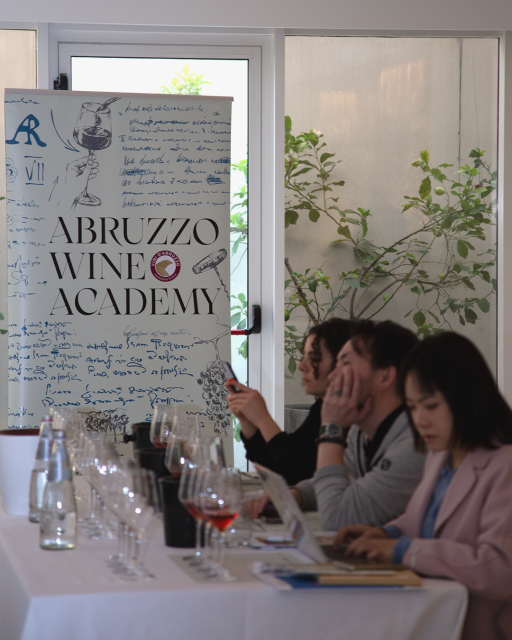 Listen up: the academy hosted 30 people
Listen up: the academy hosted 30 people
MAKING MOVES
Winemaking in Abruzzo dates back to the 6th century BCE, thanks to the Etruscans. Pre-phylloxera grape vines thrived in Abruzzo, once home to as many as 170,000 hectares of vineyards. Today, vines cover 32,000ha of the region.
However, Abruzzo has been undergoing something of a renaissance in recent years, and viticulture and winemaking have made leaps forward in terms of quality. In turn, these wines have found an increasingly global audience.
Consorzio Tutela Vini d’Abruzzo adapts the academy each year to keep up with climate change and advances in winemaking in the region. Its focus on altitude in December was a prime example of this. “I believe Abruzzo is going to show much more mountain-influenced wines,” Bartolotta told the academy’s class of international students.
SCHWARZENEGGER WINES
Until recently, the region has been dominated by what Bartolotta refers to as “Schwarzenegger wines” – big and bold expressions, largely produced from coastal areas. But Abruzzo is predominantly a higher-altitude area, with 65% of the region taken up by mountains.
While Abruzzo became famous for big and bold “hulk” wines, he says, the reality is that climate change is shifting production towards the hills. As part of the morning’s class, Bartolotta focused on explaining how altitude is impacting the style of wines.
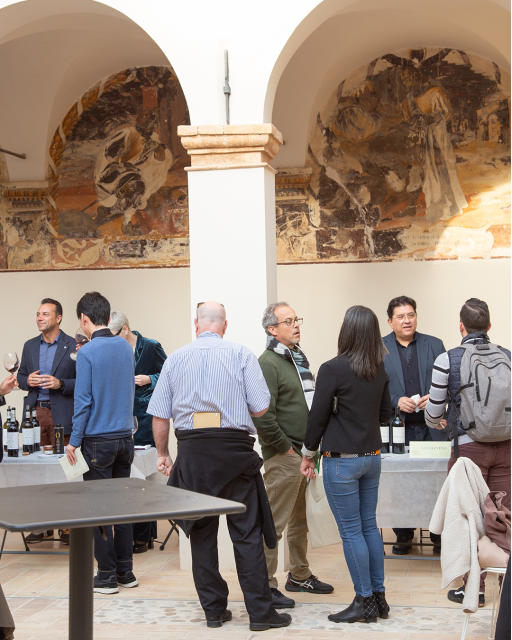 Talking shop: Abruzzo’s producers make a range of styles
Talking shop: Abruzzo’s producers make a range of styles
Producers and winemakers reinforced this message during the academy’s site visits. Cantina Tollo, for example, grows grapes on slopes, as well as by the coast. One of its vineyard projects is located at 850m above sea level and, unlike the majority of vines in Abruzzo, is grown using a guyot system.
More than 75% of the vines in Abruzzo are grown on pergolas to protect them from the sun and heat of the summer days. But higher up in the mountains, the training system isn’t needed. Pergolas require regular maintenance, and need to be hand-harvested, making them both expensive and time-consuming to pick. Planting at higher altitudes is therefore helping producers bring down some of their costs – a factor which has been particularly important over the past two years, which one producer described as the worst two harvests in a century. In 2023, the region was struck by a deluge of rain, receiving 50% of its average annual rainfall within the space of just two months, with yields down significantly as a result of disease pressure.
In 2024, Abruzzo had the completely opposite problem, with yields reduced significantly due to drought.
As they increasingly plant in the mountains, producers are innovating to find ways to retain water in the soils where rain is less prevalent. The large diurnal range at higher altitudes also helps protect the vines and retain freshness in the final wines. Abruzzo producer Pasetti Vini is no stranger to the mountains, having started to move its vineyards away from the coast as far back as 1999, but the family-run winery continues to break new ground. Its latest project is a vineyard planted three years ago at 1,000m above sea level. Here the Pasetti family is growing Chardonnay and Pinot Noir, intended to produce a traditional method spumante – the highest-altitude undertaking by the winery so far.
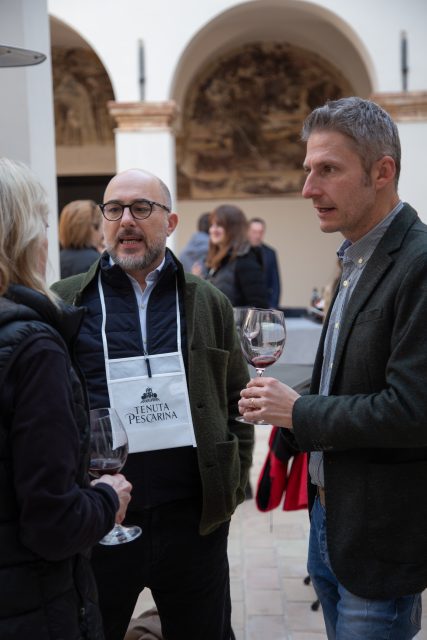 Passionate advocate: Filippo Bartolotta is a champion of Abruzzo’s diverse range of wine styles
Passionate advocate: Filippo Bartolotta is a champion of Abruzzo’s diverse range of wine styles
COASTAL IDENTITY
Pergola systems are still needed for vines situated closer to the ocean, as they are at greater risk of sunburn due to the intense heat. These coastal wines are still a vital part of Abruzzo’s identity as a region, and the local Consorzio Tutela Vini d’Abruzzo is working to highlight the unique attributes of the region’s four provinces: L’Aquila, Teramo, Pescara and Chieti. Each province, with its unique geographical and cultural characteristics, contributes to the overall diversity of Abruzzo. Gearing up for a third year of the Abruzzo Academy, Bartolotta and the Consorzio Tutela Vini d’Abruzzo have every intention of showcasing this wide-ranging diversity to a fresh cohort of international wine professionals set to arrive in the region in 2025.

